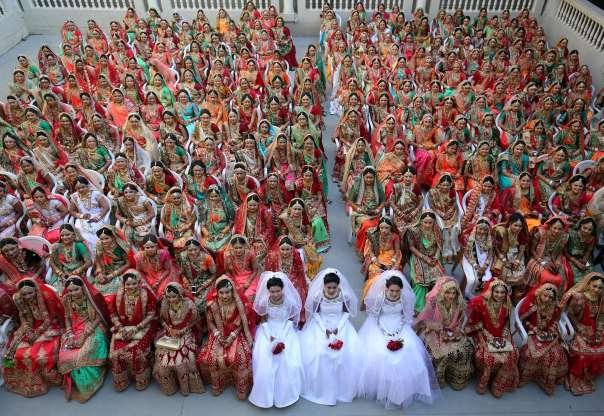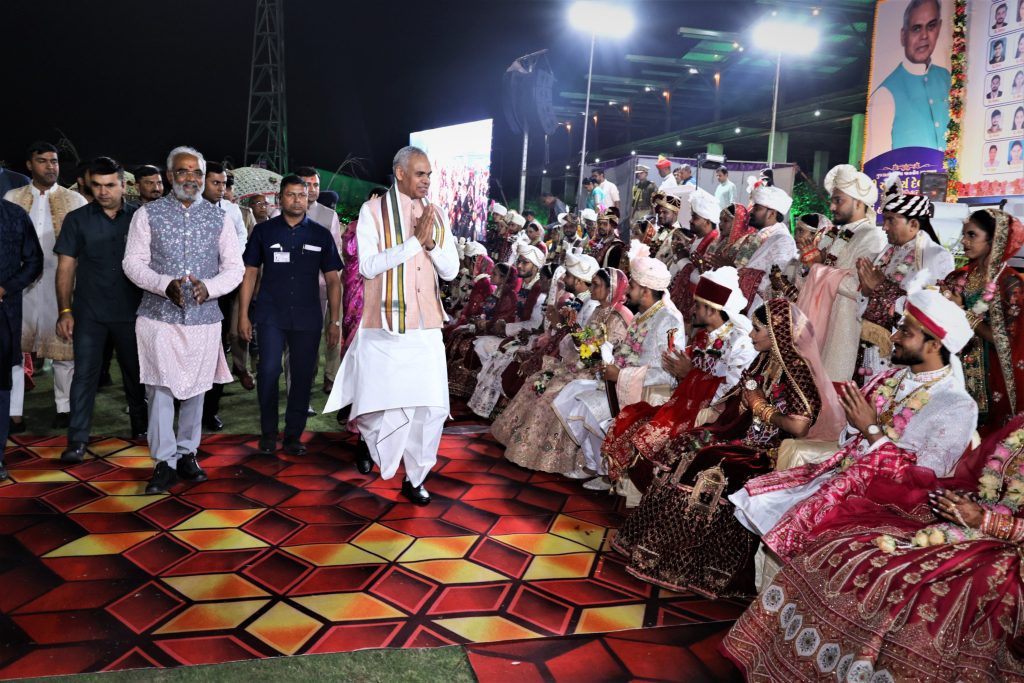
Gujarat’s child brides can't avail govt scheme; they lead lives in desolation

In Gujarat, where a law against child marriage has been in place since 1964, the persistent issue continues to plague the state. Skewed gender ratios and socioeconomic disparities drive the heart-wrenching reality of young girls from rural areas and marginalised communities being tragically sold as brides to compensate for the low sex birth ratio in upper caste communities.
In May 2023, a child rights organisation, prevented the marriage of 38 girls from a mass wedding ceremony in rural Ahmedabad. They belonged to the economically and socially disadvantaged Devipujak community, considered a Scheduled Caste. “Child marriages are rampant in Devipujaks, Chunaras, Dataniya communities and tribals primarily due to poverty and limited access to education,” says Indrajit Chauhan, who leads Prayas, a child rights organisation.
“Most people of these communities work as daily wage labourers, sell seasonal vegetables or migrate for employment. Group marriages are widely preferred in these communities since expenses get divided and the couples also get gifts from the organisers,” adds Chauhan.
Also read: Gujarat: FIR registered against man for slandering Amul brand in Facebook video
Significantly, this incident is not an isolated case of child marriage in Gujarat. The prevalence of skewed gender ratios has contributed to the rise in child brides, primarily hailing from rural areas and belonging to Scheduled Castes and Scheduled Tribes. Many of these young girls are subsequently sold as brides to upper caste communities, who have low sex birth ratio (SBR) in Gujarat.
Stolen childhood, forsaken future
At 18, Ranu (name changed) is a mother of two, and has been married for four years now. She hails from a remote village of Dang district, a tribal-dominated district in South Gujarat, which is one of the least developed in the state. Four years ago, she was married to a man from Rathwa community in a village in central Gujarat. Rathwas, a community of primarily small-scale farmers hailing from Central Gujarat, are considered under Other Backward Castes (OBCs).
Ranu, like most girls in her area, surrendered to her fate when she was married in lieu of the money that her husband’s family offered her father. “We are four siblings and the income of both my parents was not enough to run the household. I, being the oldest, started accompanying my parents to work when I was 10. I had to drop out of school in the hope of bringing some added income,” she says.
“When my father said there is a proposal for marriage for me, I was not surprised. Most girls in my village get married around the same age. Besides, I was told my husband’s family owned land and, therefore, would be able to keep me well,” she adds.
Also read: SC protects Teesta from arrest, stays Gujarat HC order for a week
However, things changed soon after her marriage in a joint family of eight, who depended on the income from a piece of land the family owned. “It gets difficult sometimes when we don’t have good crop yield or a crop failure. When I got pregnant for the first time, the family was going through an economic crisis. One of my relatives informed us that the government doles out food grains and oil-free of cost to pregnant women. But I was somehow turned away from the Anganwadi every time I went there to seek help,” laments Ranu.

Ranu, being a child bride, cannot be a beneficiary of the Mukhyamantri Matrushakti Yojana (MMY), a scheme which was launched in June 2022. “We cannot register her on the MMY mobile application as it will require her Aadhaar card details. This might get her into trouble,” says an Anganwadi worker from the district.
Under the Mukhyamantri Matrushakti Yojana, pregnant women and new mothers are entitled to two kg of chickpeas, one kg of tur dal and one kg of edible oil free of cost from the Anganwadi centres across the state. The scheme was rolled out in July last year with a budget of Rs 800 crore and aims to benefit about 1.36 lakh women in Gujarat.
A National Family Health Survey (NFHS) report in 2020 revealed that 20 percent of girls married in Gujarat are below the age of 18. The report also revealed that 5.2 percent of the girls married underage were pregnant.
Also read: Assam child marriages: Social reform, not police action, is the way out
The survey revealed a distressing reality: underage marriages were alarmingly widespread in rural areas, with 26.9 percent of girls and 33.9 percent of boys entering matrimony before the age of 18. Shockingly, it also highlighted that 6.7 percent of married girls aged 15 to 18 from rural regions were already pregnant, while 2.6 percent of underage married girls in urban areas also faced early pregnancies.
Reported cases far less than actual figures
The NFHS-5 report, released in 2021, found a rise in the prevalence of underage marriages. The report indicated that 21.8 percent of girls in the state were married before reaching the legal age of 18.
However, despite the rise in child marriages in Gujarat, the reported cases under the Prohibition of Child Marriages Act, 2006 (PCMA) paint a starkly different picture. A recent data presented during a parliamentary session in April of this year exposes a glaring disparity, with a mere 61 cases registered under the PCMA between 2019 and 2021.
This stark contrast between the actual prevalence and reported cases highlights a concerning gap in addressing and combating the pervasive issue of child marriages in the state. A survey done by Child Rights and You (CRY), an NGO involved in child rights, suggests that the practice of underage marriage was not only due to financial deprivation. In many communities, it is deeply rooted in their culture, states the CRY report.
While there are Village Child Protection Committees aimed at addressing such issues, the village panchayats in Gujarat frequently lag behind in assuming a proactive role. There is an urgent need for comprehensive measures to tackle not only the issue of child marriages, but also the underlying factors perpetuating such practices in the state.


